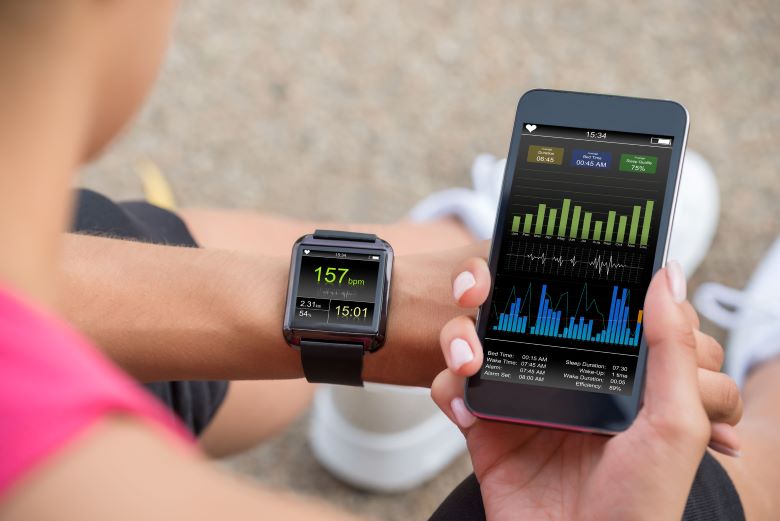Expert guidance on choosing, using and maximizing wellness apps
Crucial information on discovering what types of resources employees want, how to deliver meaningful results and making your investment shine.

Making the most of a wellness app can be a dizzying proposition.
The first problem is selecting the right one. There are plenty of purveyors, ranging from multi-function programs to extremely specific niche tools. To avoid falling into an unused app trap, first determine what you hope to accomplish. The right app for your company will depend on whether your goals include:
- Fitness activities
- General health benefits
- Financial information
- Mental health, emotional stress-release activities
- Social activities
- Community service
- Team building
The next big steps are about understanding your audience—and winning over whoever pulls the purse strings. Jennifer Musselman, a psychotherapist and leadership coach in San Francisco and Los Angeles, says that grasping what resources might stick starts by analyzing what makes your workers tick.
“There are currently five generations in the workplace, who have different attitudes, priorities, lifestyles, as well as different comfort levels with apps altogether,” she says. Before deciding anything, Musselman suggests asking:
- Who are you trying to reach?
- What kinds of jobs do they do?
- Are they working overtime every week, and are they prone to high-stress, burnout, or even possible substance use disorder?
- Are they millennials trying to balance career and young families who could use help with local resources and services?
You can’t offer everything to everyone, but “the app should be the right thing for the right people,” Musselman says.
If you’re concerned with physical well-being and lowering health premiums, be aware of the game insurers are playing. According to Katia Iervasi, who covers financial wellness for Finder.com, “To set your rates, life insurance companies look at a range of factors — and health is a big one. In most cases, you’ll need to take a medical exam, which tests your blood and urine. Your insurer will also assess your pre-existing conditions, prescriptions and medical history.”
Iervasi warns rates rise for smokers and for those who have:
- Elevated blood pressure or cholesterol levels
- A high BMI
- A family history of serious health conditions, such as diabetes and heart disease
That’s where wellness apps can save big bucks, says Iervasi. “If you can prove to your insurer that you’re keeping your health conditions under control, you may be able to access a lower rate or apply for reconsideration. Wellness apps should contain a food journal and log of physical activity, and measure water intake and the hours and quality of sleep,” she recommends.
Winning buy-in
This is all moot without executive buy-in and investment, so you must be willing and able to demonstrate your app’s strategic snap. You can do so “by looking at employee satisfaction and retention rates, for one thing,” Musselman suggests. She points to a recent survey that found “the more health and wellness resources an employer provides, the more supported employees feel and the less likely they are to leave their jobs.” That’s the sort of bottom-line business data that grabs execs’ attention.
Musselman says to relentlessly monitor metrics to see which aspects of the app are being used and which are ignored. You should also prioritize regular pulse surveys to gauge employees’ perceptions about the app.
Pitfalls to avoid
Tech and tools can be a boon for employers, but they shouldn’t be viewed as a substitute for genuine care, connections or treatment. Musselman writes: “Wellness apps can be helpful resources for anyone needing an immediate coping mechanism. Apps such as Calm, Headspace, and the new COVID Coach app developed by the National Center for PTSD at the VA offer a guiding hand to help users step out of their daily stress and anxiety.”
She cautions against getting too “app-happy,” however, sharing a fair warning against over-reliance on tech. “Do not fool yourselves into thinking that apps are an inexpensive substitute for the professional mental health services that employees may need. To get to the root of issues and for long-term sustainability, it’s crucial for individuals (with skilled therapists and professionally trained coaches) to understand why they’re experiencing those feelings.”
Apps can help alleviate certain conditions and bring a great measure of relief, but “Self-reflection, connection, and processing with a skilled clinician is ultimately where the most change occurs.”
Instead of an obligatory “throw an app at it” mentality, Musselman says leaders must model healthy behaviors—and create work environments conducive to overall employee well-being. This might include:
- Providing a psychological safe space for employees to vent, complain, offer suggestions, discuss issues regarding their work and its effect on their mental wellness.
- Creating a company culture and environment that values employee contributions, innovation, and “off-the-wall” ideas—rather than a play-by-the-rules mentality that fosters a culture of blame and fear.
- Leadership expressing their own vulnerabilities, which makes it safe for others to do so.
These are all do-able—even amid ongoing COVID-19 chaos.
What wellness content should be on an app?
Musselman says to prioritize information employees will find useful, “such as names of doctors who specialize in particular conditions and are covered by the company insurance plan, or meditation apps that employees can use to start or end their day.” Just make sure employees understand that an app is not a replacement for mental health counseling, and clarify that an app is not meant to diagnose conditions.
Musselman also warns that what employees want and what they need are often not the same. She cites Mercer’s Health on Demand Survey, which found that “one of the top features employees want on an app is how to find the right doctor or medical care for a particular issue.” According to Musselman, “They also want a portal where their medical records can be easily stored. On the other hand, this same survey listed things like telemedicine for major health issues such as diabetes or mental health counseling via video chats. As I’ve said before, these are not things you want to be using an app for; you want an ongoing, personalized relationship with a doctor and/or medical professional for these kinds of serious problems.”
She continues: “The app should also offer more support for employees about how their insurance works and how employee flex plans can be used to offset out-of-insurance network resources. This could include therapists or other therapeutic modalities, such as acupuncture and meditation, that may be outside the scope of their in-network coverage.”
Prioritizing security—and user experience
Employees won’t use an app that feels like extra work. It should load quickly, be easy to navigate and mobile-friendly—just like any decent webpage. “The app must also guarantee the employee’s security and confidentiality,” Musselman says, which is one area where tech lags behind face-to-face interactions. As Musselman says, “When it comes to mental health and wellness, nothing is more secure than a one-on-one session in a private location with a mental health professional who is ethically and legally obligated to maintain complete confidentiality.”
Wellness apps certainly have a place in the modern workplace—just not at the expense of genuine human warmth, care, concern and connectivity.







